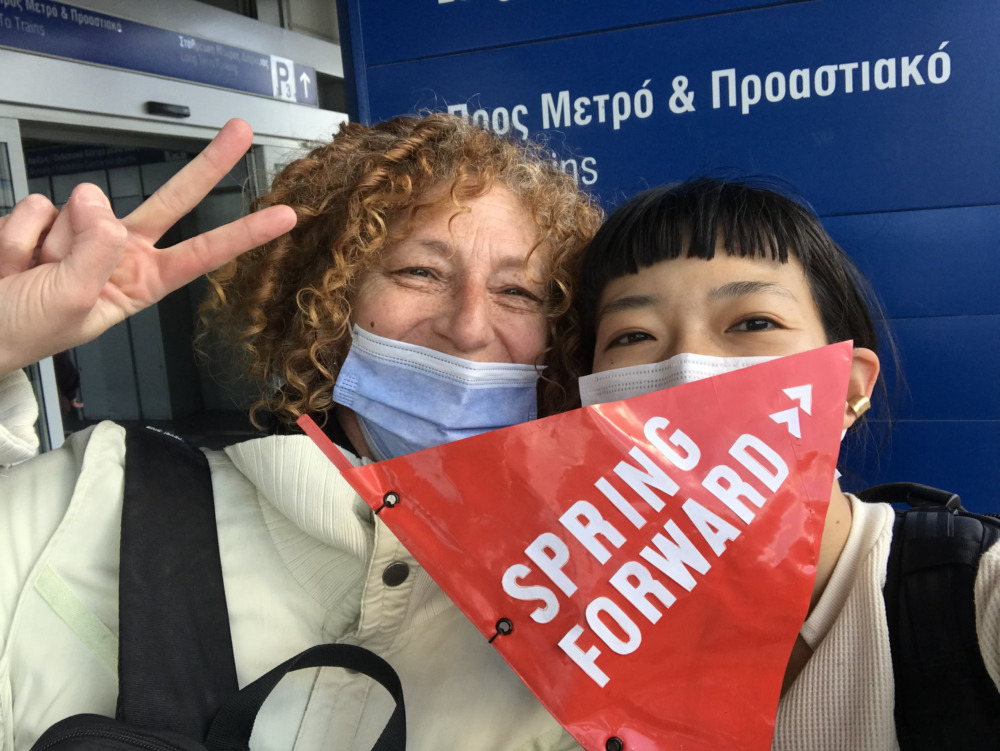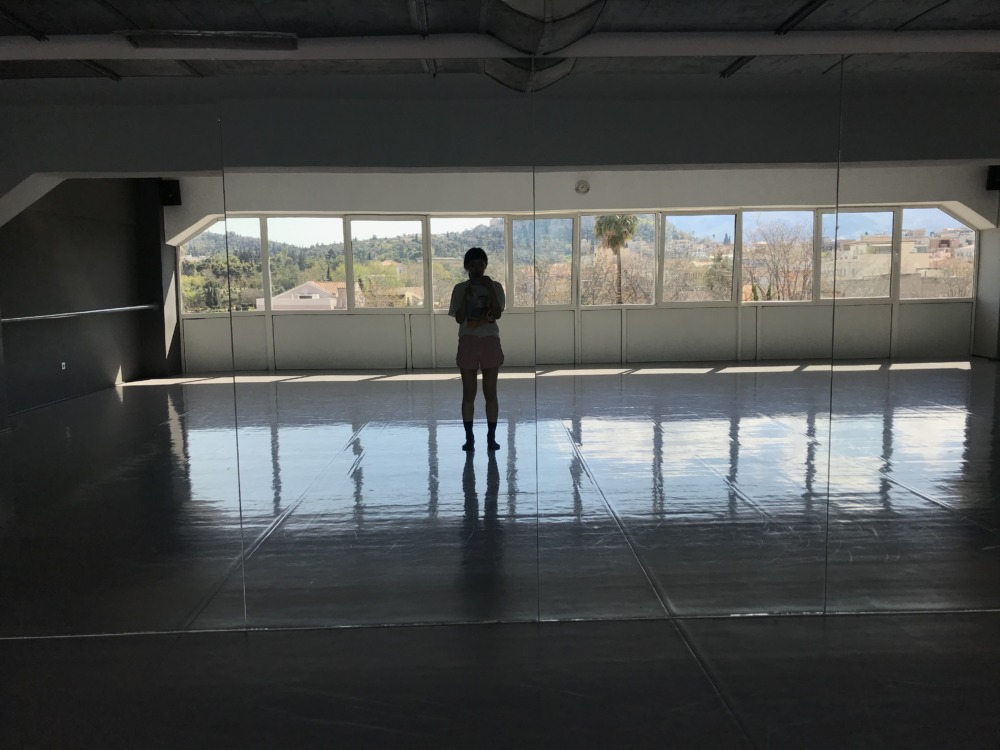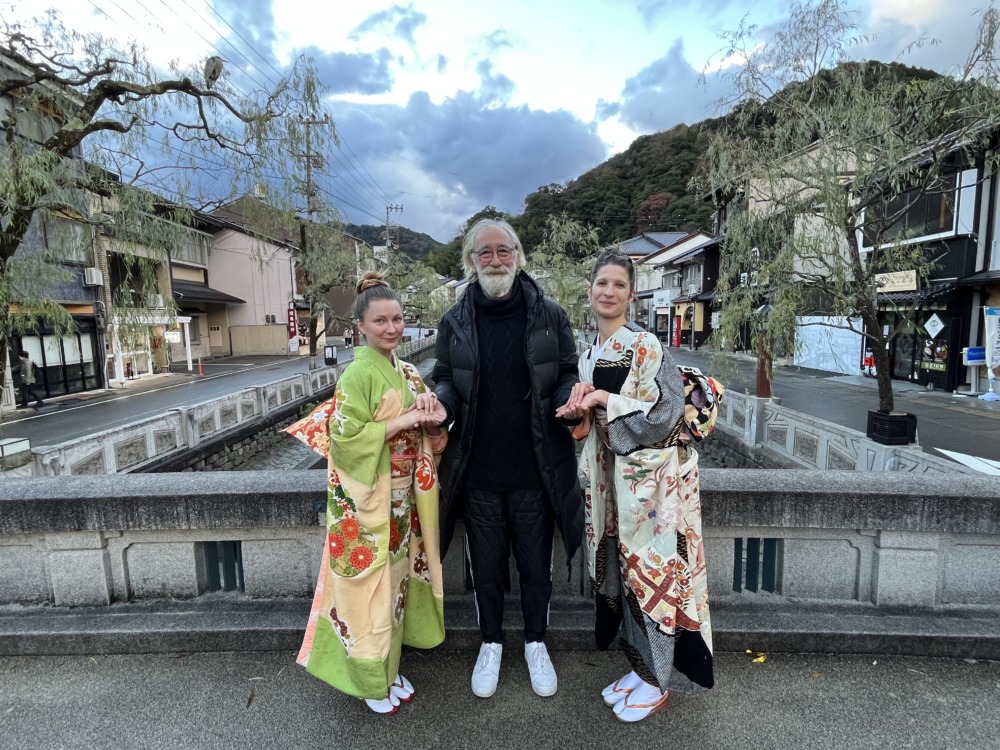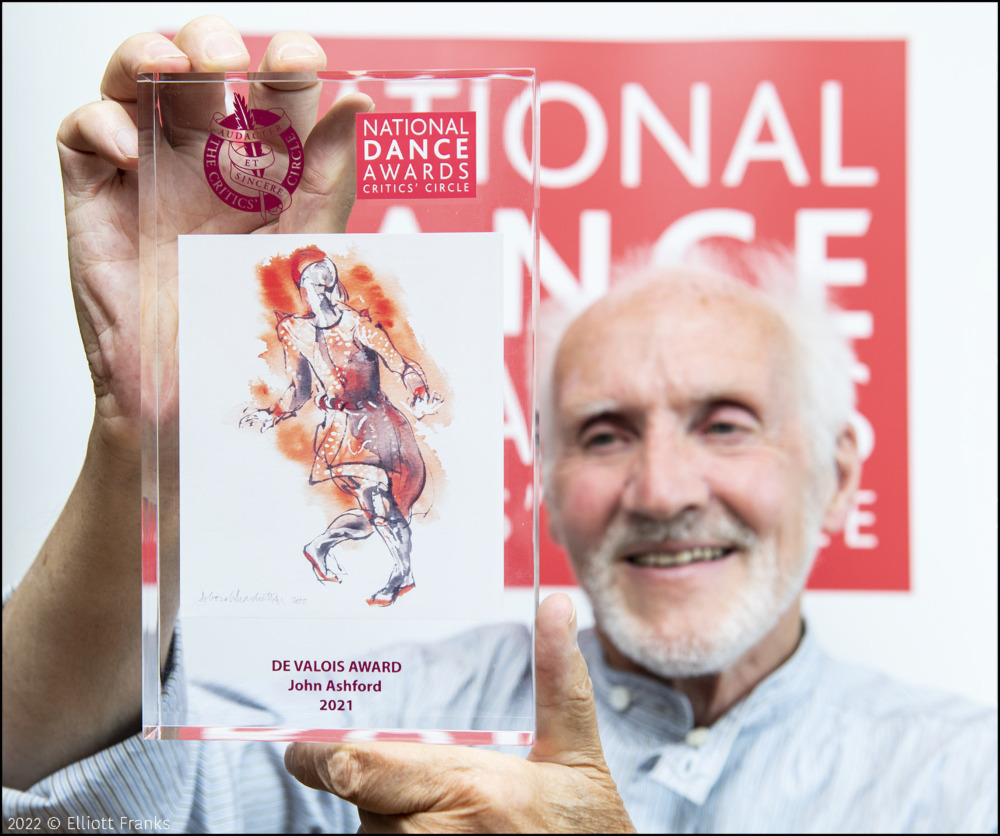Column
ColumnDancing with the difference
We Zoomed a lot during lock-down.
Aerowaves was the first to move its annual live dance festival Spring Forward to Zoom in April 2020, and we soon became accustomed to settling down in front of our screens for international conferences. We made the most of them, isolated in our rooms, but speaking to others across the world who we might otherwise never have met.
Artists, producers, presenters and funders suddenly found themselves in the same virtual rooms with equal voices. How could we do things differently when the pandemic passes? We could fund fewer projects better. We could tour them for longer. We could tour them slower, remaining for residencies. We could fly less.
And so the pandemic postponed Aerowaves Exchange for a couple of years. But then it emerged as a shining and immediate example of the good practices for which everyone had yearned.

John Ashford from Aerowaves had already selected Ayano Yokoyama as the Japanese choreographer for the Exchange. He saw her winning solo live at Yokohama Dance Competition just before lock-down. Yuichiro Yoshida from KIAC and Shinji Ono from Red Brick Warehouse watched all the Aerowaves artists on line and agreed to invite Jenna Jalonen with her duet. In April 2022, travel conditions finally permitted Ayano to fly to Athens and spend a couple of weeks at the studio of Aerowaves Partner and Spring Forward producer Frosso Trousa. This was followed by her performance of ‘Suiyoubaion’ at the opening of Spring Forward in Elefsina as European Capital of Culture, the local audience augmented by 200 guest producers and presenters from all over Europe and beyond. It was not till the autumn that Jenna could visit Japan, first spending two weeks in residence at KIAC researching a new performance, and then twice presenting ‘Beat – I just want to feel you’ during Yokohama Dance Collection at Red Brick Warehouse.

These were exactly the kind of opportunities that were dreamed of in lock-down. A single inter-continental flight and a three week stay. A chance to gain deeper knowledge of cultural difference than that afforded by a brief touring encounter. The opportunity to test new choreographic ideas against an unfamiliar environment. The chance to present work in a bright professional spotlight. But did it work for the artists?
Here’s Ayano: “I had a great time in Athens. It was very different from the typical European cities that are well-known in Japan, and it was far from the image of Greece that I had in my mind. There were many historical sites – and graffiti everywhere. There were also many churches. Greek mythology is a little similar to Japanese animism and Shinto. Fortunately, I stayed during Easter, so I was able to experience the Easter meal and festival. I am interested in Japanese animism, so it was a valuable opportunity to feel the similarities and differences.”
And here’s Jenna: “During our residency at KIAC we experienced the most amazing hospitality one can wish for. We attended many different events, meeting locals in and out of the artistic field. We were fortunate to join a Zen meditation and tea ceremony guided by a monk. He introduced his wife as his boss, told us that Sake loves him too much, and later joked about his denim-looking monk outfit too. We learned that a man who we thought could only be holy, serious, and influential because of his monastic profession appreciates and uses humour in his daily life.”
Ayano again: “The people in the city talked to me, and I was fortunate to have the opportunity to experience local culture. I even accidentally joined a Greek folk dance circle and heard stories from an immigrant shop assistant. Through experiencing the city, its architecture, food, and climate, I was able to learn a little about the lives of the people living there from different countries. I believe that learning about different cultures, religions, and races is very important. It is something that cannot be experienced so much in Japan, nor in a short stay for a single performance. However, because I had three weeks in Athens and was able to rehearse for my own performance at the same time, it led to new discoveries.”

Jenna’s research was into humour, and she also experienced local folk dance: “This show was a collection of over 30 short traditional dances, with songs, costumes and choreography of Japanese style. The experience later served as a great inspiration in our creative process, where the form and ‘guarding of tradition’ was incorporated and performed by Polett in an inflatable dinosaur costume.” But here she also encountered puzzling cultural difference: “While a scene was happening there would be little to no reaction or laughter among the public, when afterwards in the questions about how funny they found it, the answers were mainly ‘very funny’ or ‘extremely funny’. This somehow showed me how important social awareness and respect for ‘the other’ Japanese people have.”
Ayano also made discoveries through encounters: “Through my experience in Athens and interaction with artists from other countries at Spring Forward, I had the opportunity to re-examine my own country and roots. During a conversation with a dancer I met while walking between theatres, they asked if my partner was a man or a woman. This issue related to gender is not often experienced in Japan. In Europe, it is becoming more common to have conversations about using ‘She’ or ‘He’ when addressing someone, and the assumption that one’s partner is of the opposite sex is no longer taken for granted. I was happy to learn about this current trend in Europe.”
Both artists report extensively about the benefits of their experiences, and of testing their work against the perceptions of new and different audiences. Here is a future-looking example of best practice from which much can be learned, and hopefully applied to a second exchange in 2025. But let Ayano have the last word:
“This experience allowed me to broaden my horizons and deepen my understanding of the world of dance.”








